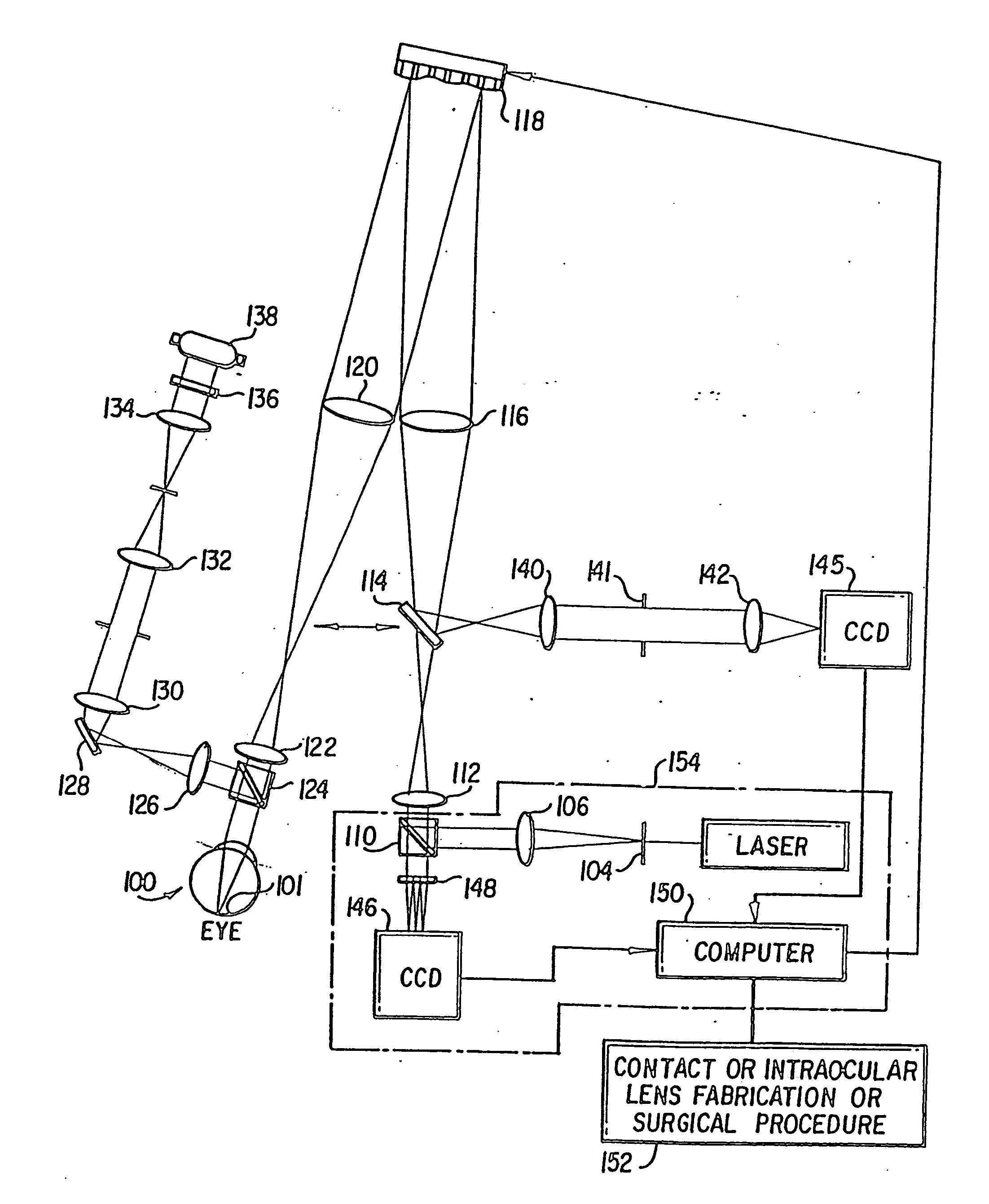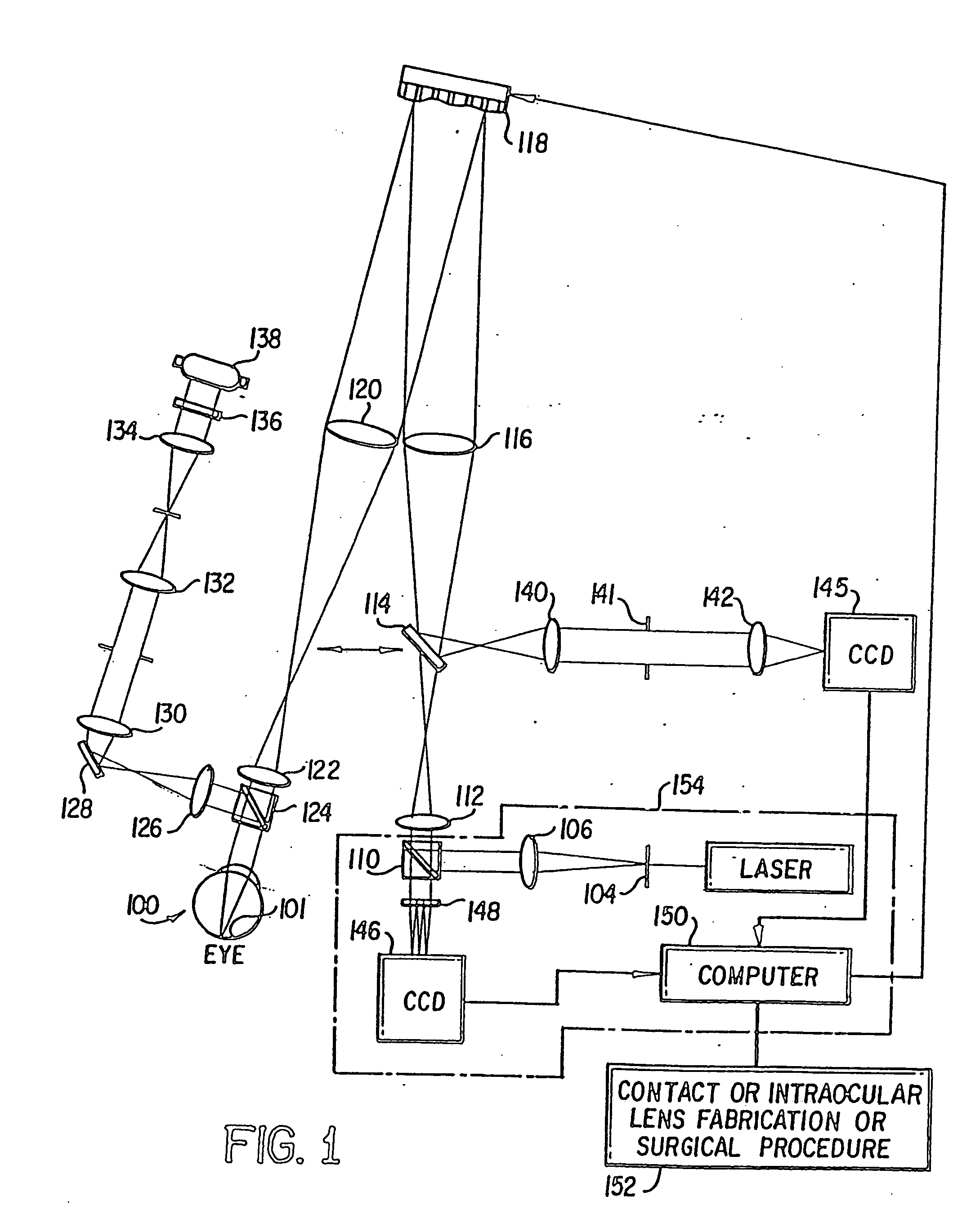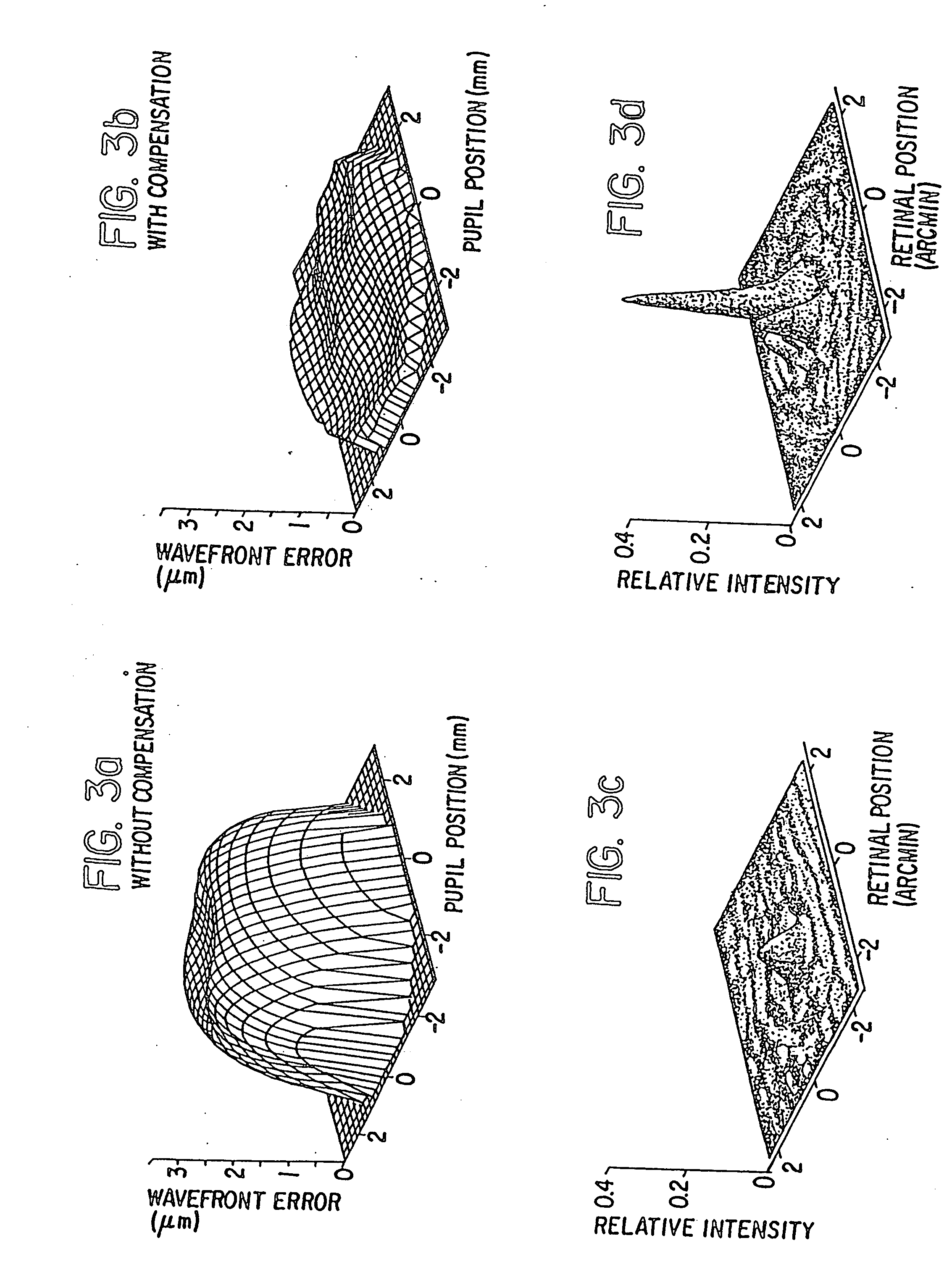Method and apparatus for improving vision and the resolution of retinal images
a retinal image and resolution technology, applied in the field of retinal image resolution and vision improvement, can solve the problems of impairing vision, ophthalmic lenses that can only correct defocus and astigmatism, blur images taken of the living human retina, etc., and achieve the effect of accurately measuring higher-order aberrations
- Summary
- Abstract
- Description
- Claims
- Application Information
AI Technical Summary
Benefits of technology
Problems solved by technology
Method used
Image
Examples
Embodiment Construction
[0023] Referring now to FIG. 1, there is shown, in schematic diagram form, the apparatus of the present invention which can be used to both improve visual performance and to provide high resolution retinal images of eyes. The apparatus of the present invention, as shown in FIG. 1, measures the aberrations of the eye using a Hartmann-Shack wavefront sensor and then corrects them in a closed feedback loop with a compensating optical component such as a deformable mirror.
[0024] To measure the eye's wave aberration, a point source is produced on the retina by a laser 102. The light from the laser 102, is controlled by a shutter (not shown). The laser light passes through a spatial filter 104 and is collimated by an achromatic doublet lens 106. The collimated laser beam is reflected by the polarizing beamsplitter 110, passes through the lenses 112 and 116, and is incident onto a deformable mirror 118. The laser beam reflected from the deformable mirror 118 is focused by the lens 120, pa...
PUM
 Login to View More
Login to View More Abstract
Description
Claims
Application Information
 Login to View More
Login to View More - R&D
- Intellectual Property
- Life Sciences
- Materials
- Tech Scout
- Unparalleled Data Quality
- Higher Quality Content
- 60% Fewer Hallucinations
Browse by: Latest US Patents, China's latest patents, Technical Efficacy Thesaurus, Application Domain, Technology Topic, Popular Technical Reports.
© 2025 PatSnap. All rights reserved.Legal|Privacy policy|Modern Slavery Act Transparency Statement|Sitemap|About US| Contact US: help@patsnap.com



